Why You NEED a Carb Detox to Lose Weight
Have you ever wondered if the reason you feel tired, sluggish, moody, and just generally unhealthy is the same reason you can’t get rid of your extra weight?
Most people associate those issues with being overweight, but mistakenly see the extra weight as the cause.
In most cases, it’s your diet that’s to blame for all of those issues–extra weight included–especially if you eat a lot of carbs!
Most Americans eat way too many carbs, which leads to your body having more glucose that it needs—so it stores it as fat.
However, if you overload your body too often on carbs, you can end up with more glucose in your blood than your body can process—leading to insulin resistance, which eventually progresses to prediabetes and then type 2 diabetes.
The good news is, you can fix this issue by simply detoxing from carbs, so your body can catch up with the backlog of glucose, and start burning fat as fuel again.
A detox from carbs is especially crucial if you’re insulin resistant, as you likely won’t be able to lose weight without cutting out carbs—even if you drastically cut your total calorie intake.
But even if you’re not insulin resistant, taking a temporary break from carbs will jump-start your weight loss, give you tons of energy, and help reset your hormones—so you can actually lose weight and keep it off.
We’ll share everything you need to know about how to do a carb detox, and what to expect when you take the no-carb plunge.
But first, let’s chat a little more about why your body needs to detox from carbs, and what your carb addiction has been doing to your health.
This post may contain affiliate links, which helps keep this content free. Please read our disclosure for more info.
Why Your Body Needs a Break from Carbs
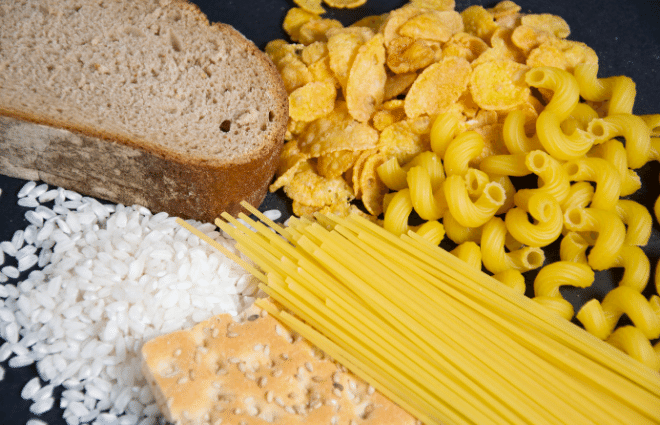
The short answer here is that most people eat way too many carbs on a daily basis.
Our bodies are designed to digest food as efficiently as possible, and glucose (i.e., carbs, including sugars, fruits, grains, etc.) is the quickest and easiest energy source.
Your body sends out insulin to carry the glucose into your cells as needed—so the more carbs you eat, the more insulin your body produces.
If you end up with more glucose in your bloodstream than you need right away, your body stores it as fat for later use.
This isn’t a big deal, unless you eat more carbs on a regular basis than you can burn.
This will definitely cause your to gain excess fat, which simply cutting calories can’t shed; but if you do this long enough, your cells become resistant to absorbing glucose and insulin.
This means you have now entered insulin resistance, which will eventually lead to prediabetes and type 2 diabetes if you don’t change your diet the right way.
A carb detox will give your body a chance to catch up on processing the excess blood sugar, allowing your cells to gradually become more receptive to insulin again.
If you simply cut calories from your diet without detoxing from carbs, your body will still be stuck in glucose overload, and will keep burning blood glucose for energy instead of fat—and that’s true for all people, not just those with insulin resistance.
The Very SAD Impact of the Standard American Diet
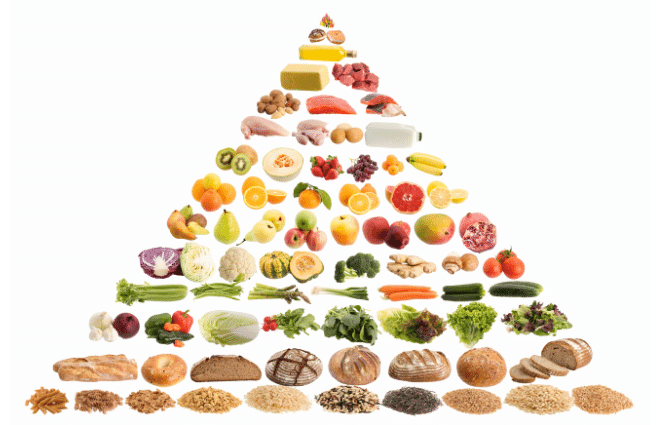
We have been trained for decades to believe that eating a bunch of carbs is healthy for you, or at least totally normal.
School lunches are loaded with carbs and packed with added sugars…
We get bombarded daily with ads for sugary energy drinks, sodas, and delicious, dessert-in-a-cup coffee beverages…
And we’ve been led to believe foods like Wheat Thins, Cheerios, and Lean Cuisine meals are healthy foods (they aren’t).
Remember the food pyramid you learned about in school? The base—the largest section of the pyramid—is carbohydrates.
The food pyramid is also referred to as the Standard American Diet, a.k.a. the “SAD” diet. (Or more recently, the Dietary Guidelines for Americans. I guess the SAD acronym was too depressing!)
It was first developed around the 1950’s, and even though the SAD has been revised numerous times, it still recommends that 45-65% of your daily calories come from carbs.
Now, that may not sound like a lot, but think of it this way:
According to the Mayo Clinic, “if you get 2,000 calories a day, between 900 and 1,300 calories should be from carbohydrates. That translates to between 225 and 325 grams of carbohydrates a day.” (1)
For easy math, if you eat three meals a day, that’s 75 to 108 grams of carbs per meal.
Let me put that into perspective for you:
- One teaspoon of table sugar = 4 grams of carbs
- One grande pumpkin spice latte from Starbucks = 52 grams of carbs
- A can of Coke = 40 grams of carbs.
- One packet of instant maple and brown sugar oatmeal = 32 grams of carbs
- One cup of plain Cheerios with one cup of nonfat milk = 33 grams of carbs
- A cup of broccoli = 7 grams of carbs
- Lean chicken breast = 0 carbs
How do you even come up with a meal that has 75+ grams of carbs that isn’t pizza or a giant bowl of rice?
How on earth can American doctors and dieticians really believe that consuming up to 325 grams of carbs per day is in any way healthy?
And that’s based on a 2,000 calorie diet! The average American actually eats more than 3,600 calories per day, which is a 24% increase from 1961. (2)
Not only does this really help explain the obesity epidemic in the US—it shows that cutting out carbs is the best and most effective way to lose fat quickly without starving yourself.
Carbs are Hard on Your Body—and they Hit Your System FAST
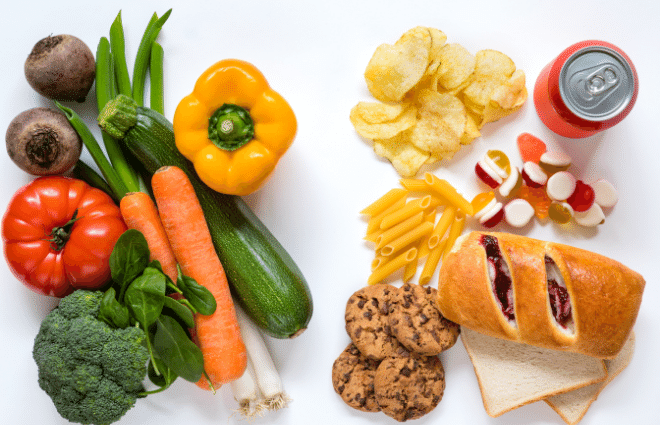
If you’re struggling with your weight, I’m willing to bet that most of the carbs you’re eating are “quick carbs” like white rice, potatoes, bread, cereals, and other simple or processed foods—rather than complex carbs, like sweet potatoes, brown rice, and berries.
The worst thing about those delicious, simple carbs is that they hit your body with a big dose of glucose in a little as twenty minutes after you eat them—translating to a major blood sugar spike.
Complex carbs digest slower, and are more gentle on your body—but they still translate to sugar in your body.
Here’s the scientific side of a blood sugar spike:
The less you weigh, the more your blood glucose level is raised per each gram of carbs you eat. That’s because larger bodies contain more blood, so the ratio of glucose to blood varies.
But the average formula for most bodies is that 1 gram of carbs will raise your blood sugar by 3-4 mg/dl. (You can look at a full chart here, if you want to calculate your personal risk)
Of course, there are other variables that affect your blood sugar levels, like:
- Your blood sugar levels before you ate the carbs
- How quickly your body is able to process glucose (insulin resistance = very slow processing)
- How active you are (physical activity burns glucose quickly, which means your body can handle eating more—which is why Michael Phelps isn’t diabetic, despite regularly eating his weight in carbs) (3)
For the sake of simplicity, let’s use the average of 1 gram of carbs raising your blood sugar by 3.5 mg/dl.
By that formula, eating the SAD recommended 75 grams of carbs in one meal could potentially spike your blood sugar to over 260 mg/dl just from that meal.
Blood glucose is considered high if it is over 180 mg/dl two hours after you start eating, or over 130 mg/dl before eating.
Holy diabetes, Batman!
The SAD shouldn’t stand for “Standard American Diet”—it should stand for “Serious A1C Diet.”
With this crazy amount of carbs the SAD recommends, it’s no wonder 1 in 3 Americans is prediabetic, and even more people than that are insulin resistant. (4)
What’s worse, is this is a silent epidemic.
Most people won’t notice the typical signs of high blood sugar until their levels reach over 250 mg/dl and don’t come back down quickly–but that doesn’t mean damage isn’t being done at levels lower than that. (5)
Even if you aren’t insulin resistant, and your body can handle the glucose hit by producing enough insulin to clear it from your bloodstream quickly, that is a lot of work for your pancreas.
And if you want to lose weight, you need to get your blood sugar levels under control, so your hormones and metabolism can go back to normal levels.
Detoxing from carbs is the only way to give your body a break, and allow your body to burn fat for fuel again.
Feeling the Pain
If your blood sugar spikes high too often (which could be any time you eat a high carb dish, like a pasta dinner, a piece of cake, etc.), the unprocessed blood glucose and insulin can cause microscopic damage to the nerves in your hands, feet and eyes.
That’s why diabetics often end up with diabetic nerve pain, numbness and tingling in their fingers and toes, sometimes lose fingers or toes, and can even go blind.
However, you don’t have to have full-blown diabetes to experience nerve damage from high levels of blood sugar, especially since the damage happens gradually over time. (6)
Detoxing from carbs (followed by reduced carb consumption afterwards) is absolutely necessary to help purge excess blood sugar, and keep your blood sugar levels at a healthy amount going forward.
Heal Your Gut
Other than the impact of insulin and blood sugars on your system, detoxing from carbs can help rebalance your gut bacteria.
The bad bacteria in your gut feed on sugar. If you “feed” them too much, you will end up with an overgrowth of bad bacteria, which results in slowed digestion, bloating, fatigue, cravings, nausea, weakened immune system, and other yucky side effects.
Taking a break from carbs will starve the bad bacteria out, and allow your body to restore a healthy balance of good bacteria in your gut.
Taking a high-quality probiotic can help speed this process up, but even the most powerful probiotic is no match for a diet high in carbs and sugars.
What Happens When you Detox from Carbs?
Off the Scale Benefits of Detoxing from Carbs
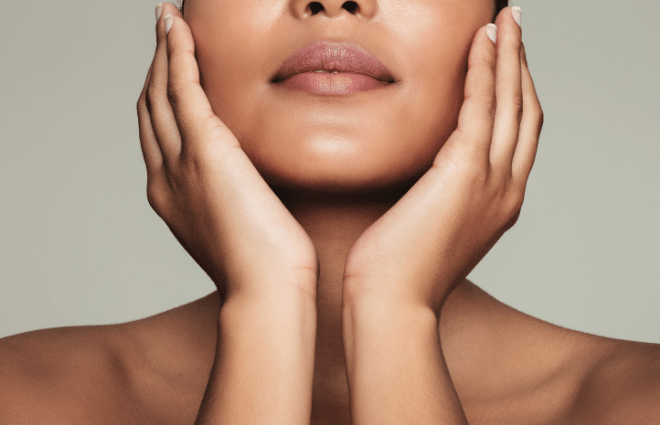
A carb detox helps with more than just weight loss.
Your hormone levels will balance out, including:
- Insulin (which transfers glucose from your blood to your other cells)
- Thyroxine (which regulates your metabolism)
- Ghrelin (which tells your brain when your gut is full)
Many people will notice a difference in their skin, especially since imbalanced hormones and excess blood sugar can lead to rough, dry skin, and/or breakouts.
Plus, once your body becomes more efficient at utilizing food for energy, you’ll experience a huge boost in your energy levels, more stable energy throughout the day, and fewer mood swings.
Translation: fewer coffee breaks, and longer-lasting energy!
Of course, there is a hurdle you need to get through to get to all these benefits—and that’s the carb detox itself.
Carb Detox Side Effects
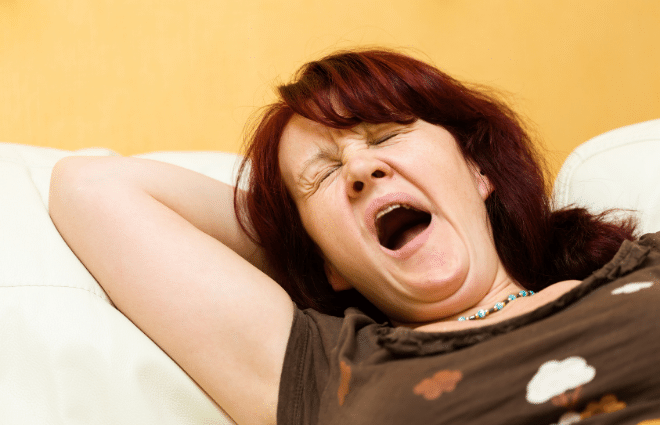
When you first start your carb detox, you might experience many of the less-than-exciting withdrawal symptoms you have with any detox.
That’s because your body has become very dependent on the regular rush of glucose, and enters a stress reaction when you suddenly cut that out.
Not to mention, your body also needs to process the extra glucose from your bloodstream, and purge any toxins that have built up from processed foods.
Then, your body needs to adjust to burning fat and protein for energy, rather than easy-access glucose, which can take some time.
Generally speaking, the worse your diet was before you started eliminating carbs, the worse your withdrawal symptoms will be.
Withdrawal symptoms you may experience include:
- Headache
- Nausea
- Intense cravings
- Fatigue
- Mood swings
- Mild, flu-like symptoms
Luckily, these symptoms don’t last too long, and the change to your diet will make you feel amazing once you get past the detox.
The first time I detoxed from carbs, I felt fine the first day; had a headache and cravings the second day; got pretty cranky the third and fourth days; and then started to feel much better after that.
Those few bad days really proved how much I needed this detox from carbs, and how addicted I really was—and I know I’m not alone!
How to do a Carb Detox
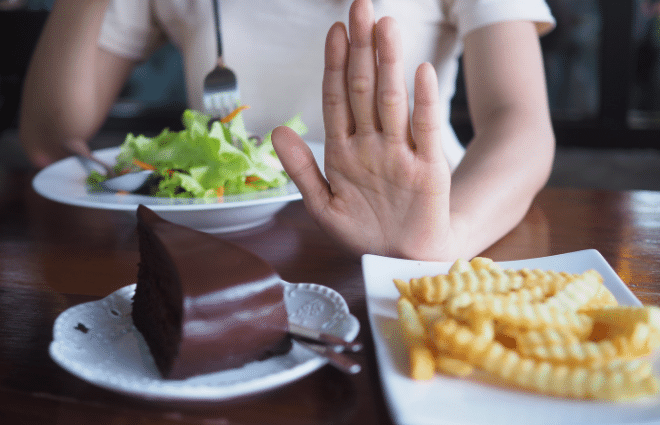
Now, the moment you’ve been waiting for: how to actually do a carb detox so you can regain control of your health.
To make sure you get the maximum benefit of a carb detox, we suggest staying off of carbs for at least a week.
You can continue your detox for longer than a week if you would like, as long as you continue to eat filling, nutrient-dense foods.
As thousands of dieters have proven, you don’t need high-carb foods to thrive—especially when you consider most high-carb foods are relatively low in nutrition and minerals, compared to meats and vegetables.
For example, keto dieters cut nearly all carbs from their diets except for vegetables, forcing their bodies to burn fat as its first source of energy.
Now, you don’t have to go that route; but just know that even if it feels difficult at first, cutting carbs out of your diet is perfectly healthy (and arguably much healthier than continuing to eat excess carbs every day!).
What You Should Eat
The best foods to eat during a carb detox are high protein and high fiber foods, like lean meat, eggs, and vegetables.
You can also eat healthy fats, like avocados, olives, and healthy cooking oils.
These foods are filling and digest slowly, which will help keep cravings at bay.
Some of the best foods include during your detox:
- Broccoli, spinach, kale, or other leafy green veggies
- Summer squash or spaghetti squash
- Salmon, tilapia, or other healthy fish
- Chicken, turkey or lean beef
- Protein powder with less than two grams of carbs per serving
- Nuts and seeds (except for peanuts)
- Flavorful herbs, onions, garlic, and low-salt, carb-free seasonings
What You Shouldn’t Eat
Even though you may think of these as healthy foods, beans and starchy veggies, like potatoes and peas, have a fairly high carb content.
Fruit, sweet potatoes and quinoa are also higher carb, even though they have lots of extra fiber. For the purpose of a detox, you should stay away from those kinds of foods for the first week at least.
You’ll also need to avoid the more obvious foods, like grains, breads and cereals.
Foods to avoid during your detox:
- All fruit, except for avocados and olives
- Bread, rice, oats, and other grains
- Starchy veggies and legumes, including potatoes, beans and peas
- Higher carb, fibrous foods, like sweet potatoes, quinoa, wild rice, brown rice
- All processed foods, even if they are labelled as healthy or low-carb
Root veggies, like carrots and beets, have a higher sugar content than other veggies.
We suggest staying away from these during your carb detox, but some sources suggest the fiber and other compounds found in some root veggies can actually help remove the excess sugars from your bloodstream.
Basically, root veggies are iffy at best. If you can go without them, please do!
What to do After your Detox
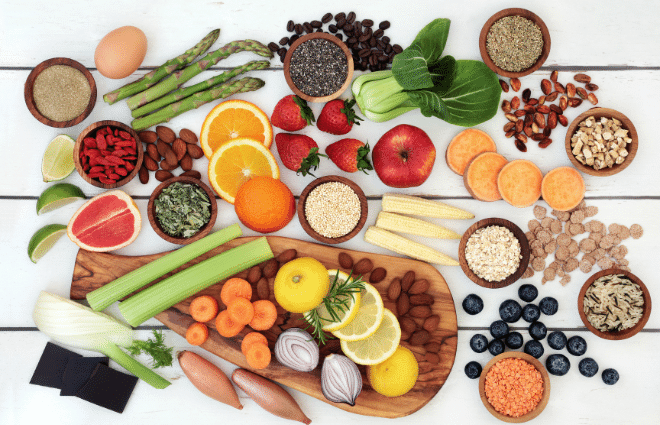
After your detox, you can’t just go back to the way you were eating before. This will quickly undo all of your hard work!
You should slowly integrate carbs back into your diet, starting with one serving of healthy, complex carbs per day, such as a small sweet potato, or half a cup of wild or brown rice.
Those portions are roughly 25 grams of carbs, which shouldn’t spike your blood sugar as long as you stick to complex carbs.
You can then start to add other complex carbs back in, such as berries, whole grains, and unsweetened diary, as long as most of your food consists of lean protein and vegetables.
But if you’re feeling pretty great without eating carbs, feel free to stay off of them for as long as you want!
Just make sure you get enough calories and protein from other healthy food sources.
Also, you don’t need to eat carbs every single day—especially if you want to lose weight quickly.
We suggest having a serving of carbs on days when you work out, and staying away from them on days when you’re more sedentary.
And of course, continue to avoid processed foods, breads, white rice, and other “quick” carbs.
If you want to splurge every once in a while, like at a party or a holiday, that’s perfectly fine!
Just make sure to balance that splurge with several days of low- or no-carb foods, and plenty of protein and fiber—and don’t make “cheating” a habit, or you could quickly end up with insulin resistance and carb addiction again.
Related Detox Articles:
- 3-Day Detox Plan
- 5 Best Detox Teas
- Detox Tea Recipes
- 17 Detox Water Recipes
- 8 Ways to Cut Down on Sugar
- How to Quit Your Sugar Addiction
Guaranteeing Weight Loss Success
If you’re ready to detox from carbs, but are still feeling a little nervous about how to do this, you’re not alone!
Any major weight loss step can seem daunting at first, especially if it involves a lifestyle change, like a carb detox requires.
And if you’ve struggled to lose weight, you might just be exhausted at the idea of trying to shed pounds again.
Many of our clients felt exactly the same way before starting our program—hopeless, exhausted, frustrated, and just over weight loss programs that don’t work for them.
We created our 21 Day Fat Loss Challenge for people exactly like you—people who feel like they’ve tried everything under the sun, but just can’t shed the weight or keep it off.

Our challenge provides a step-by-step plan to help you lose up to 21 lbs in just 21 days, with far less effort than you may think!
The Challenge will walk you through your carb detox, and help you start your weight loss journey the right way.
Tons of our clients have turned it into a lifestyle diet and have lost as much as over 100 pounds with the challenge–including many members who have reversed their insulin resistance!
The best part? Besides just losing weight, the 21 Day Fat Loss Challenge was designed to heal your gut, rebalance your hormones, and retrain your tastebuds—so you’ll actually be able to keep the weight off!
If you’re ready to make some changes in your life, this is the ONLY place you should start. We’ll teach you exactly how to make the necessary changes in your diet and lifestyle, and how to keep them “beyond the diet.”
Take control of your life and start your 21 Day Fat Loss Challenge TODAY!
Leave a comment below if you enjoyed this article on why you need a carb detox to lose weight, or if you have any questions!
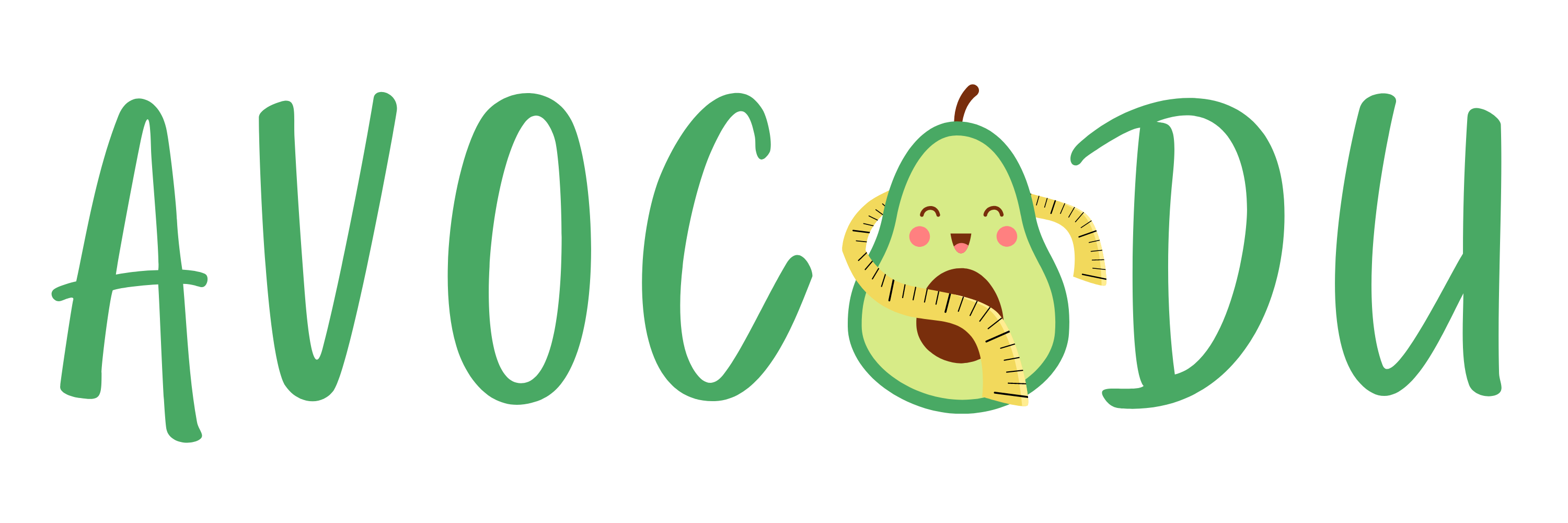
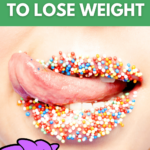
This is such an elaborate blog and an interesting one I must say. Thank you for sharing this.
I can definitely state that when I have a carb laden meal , I do feel heavy and sluggish. I think it is so important to limit the amount of carbs we consume. It can also give you a bloated stomach. I try to have days where I have very little carbs. I feel this balance works for me. I am glad I found your article as I did believe this was just in my mind! But now I know it is not just my imagination. Now that most of us we are mostly working from home and getting very little exercise, it is more important to limit over eating and the consumption of carbs. Good article. Thanks.